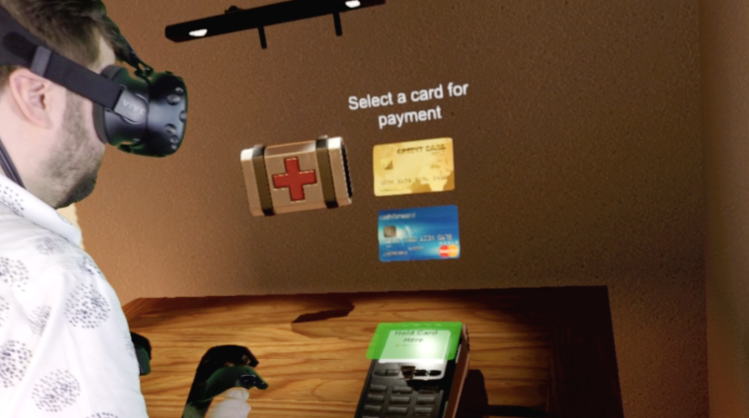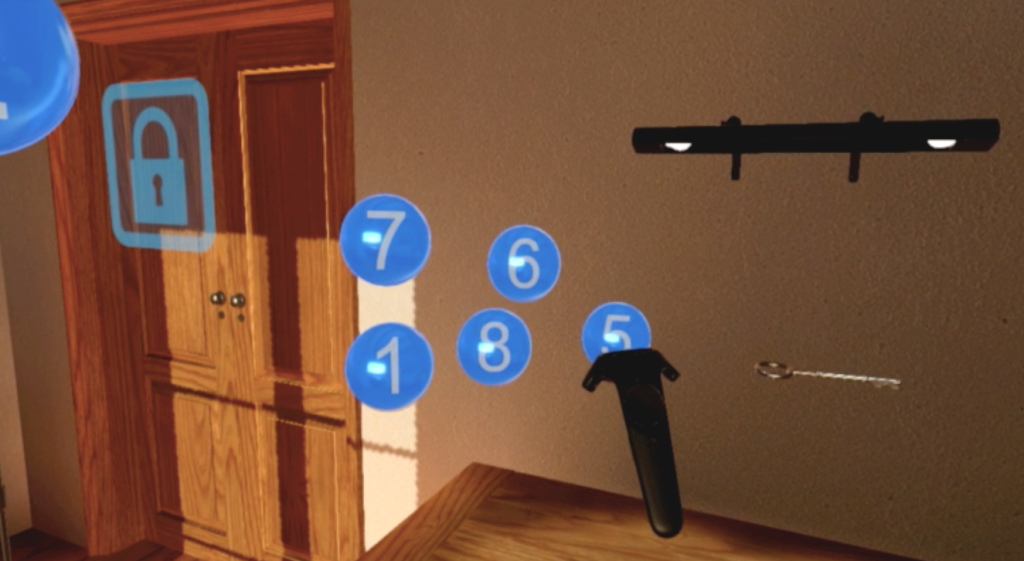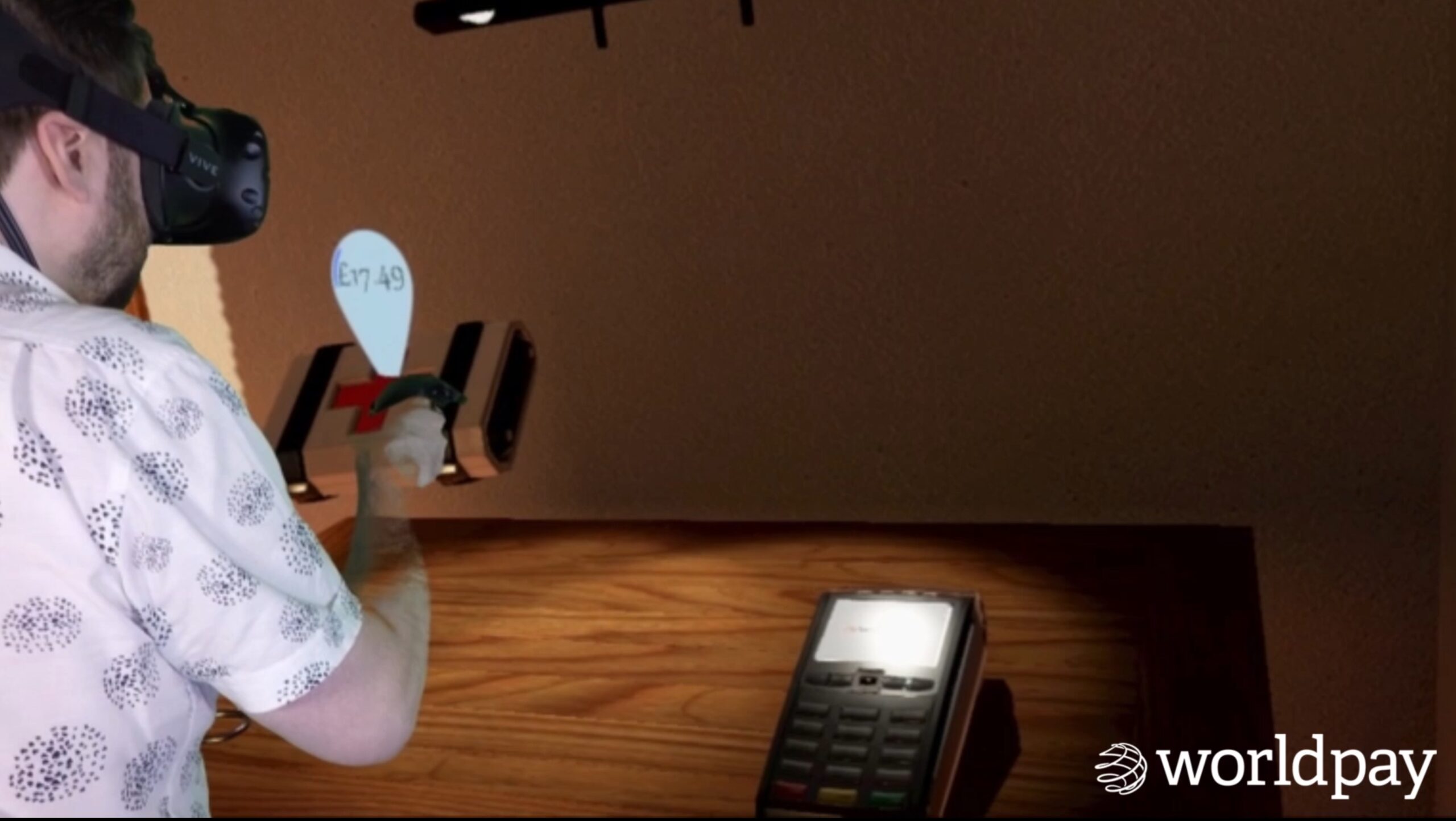The challenge: The VR Payments Demo project aimed to tackle the challenge of showcasing both Host Card Emulation (HCE) and Host Terminal Emulation (HTE) within a captivating virtual game-like environment.
The solution: As the project lead, I spearheaded a small team that collaborated with VR partner Inition and payments consultancy partner Consult Hyperion to develop an innovative solution.


Our approach involved conceptualizing a virtual game experience set in a room where users could interact with various elements. The primary objective was to enable seamless transactions within the virtual space using a combination of HCE and HTE technologies.
To achieve this, we devised a unique gameplay mechanic that incorporated power-ups. Players could pick up these power-ups, triggering a gaze-based gesture that confirmed the addition of items to their virtual shopping cart. Additionally, a virtual card could be obtained and tapped on a virtual terminal, initiating a real EMV-style payment transaction between the virtual terminal and card.
To effectively communicate our solution, I not only led the development process but also demonstrated the proof of concept in presentations and marketing videos. During these presentations, I provided the voice-over narration to articulate the features and benefits of our VR Payments Demo.
Through this pioneering project, we successfully showcased the potential of merging immersive gaming experiences with secure and convenient payment methods. By leveraging cutting-edge technologies and collaborating with industry experts, we were able to demonstrate the seamless integration of HCE and HTE in a virtual reality environment.
More information here at Venture Beat
Tech stack: VR (Virtual Reality), Unity, HTC Vive, .net / C#, HTE, HCE
